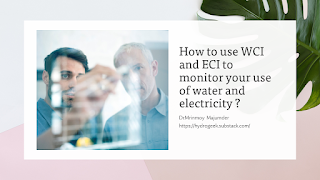Smart Use of Water and Electricity for Reducing Climate change impact: How?
The average American family uses approximately 70% of its 300 gallons of water per day indoors. The majority of household water comes from public sources, such as a water tower, which gets 63% of its water from surface water sources like rivers, lakes, and streams. The remaining 37% is pumped from aquifers and other groundwater sources.
Your neighborhood's water supply is strained due to the combined water use of all of the residents. Water shortages may require some communities to update their outdated wastewater treatment and delivery systems. This could lead to higher consumer water prices, water rationing to manage any shortages, and costly water treatment projects to upgrade outdated facilities.(Read in detail at NEEF)
Again,almost all forms of electricity generate waste. For example, natural gas releases carbon dioxide and nitrogen oxide. Earth's atmosphere traps these gases, leading to air pollution and smog. Weather patterns and geological variations can affect the prevalence of smog in a particular area.
The domestic use of both water and electricity contributes to climate change and as a result, smart use of both the resources is need of the hour.
Impact of Domestic Consumption of Water and Electricity
Humans directly alter the dynamics of the water cycle by building dams to store water and taking water for domestic, commercial, and agricultural purposes. Water supply and demand are also expected to be affected by climate change. Domestic demand for water from urban consumers is increasing as large-scale rural-to-urban conversion occurs around the world.
On the other hand “Electricity production (25% of 2020 greenhouse gas emissions) – Electric power generates the second largest share of greenhouse gas emissions. Approximately 60% of our electricity comes from burning fossil fuels, mostly coal and natural gas.”(EPA)
Causes of Increase in GHG and change in climatic pattern
One of the main causes of the increase in GHG in the atmosphere was found to be the unrestrained use of water and electricity by domestic consumers. The volume of unutilized water in a catchment rises as a result of the unplanned use of water waste. Again, the indiscriminate use of electricity for luxury by domestic consumers raises the cost of electricity production, which raises the demand for burning fossil fuels. The combustion of fossil fuels emits GHGs into the atmosphere. So, if the daily use of water and electricity can be monitored and optimized to eliminate unnecessary resource use, a substantial portion of water and electricity waste can be effectively reduced.
As a result, two indicators were created to monitor and represent the level of water and electricity consumption in a household on a daily basis. There are two apps linked to the indicators that allow any domestic consumer to:
1)Monitor
2)Regulate
3)Plan
the use of water and electricity supplied to a household. Thereby conserving the utility of water and energy resources.
WCI and ECI
Water Consumption Indicator or WCI is used for water management and Electricity Consumption Indicator or ECI is used for electricity management in a household.
Open the Apps and use them for your own use and try to conserve the two most important natural resources of this World.
Water Consumption Indicator or WCI
Electricity Consumption Indicator or ECI
For some extra benefits use this link.
Thanking you,
Add to Listy
